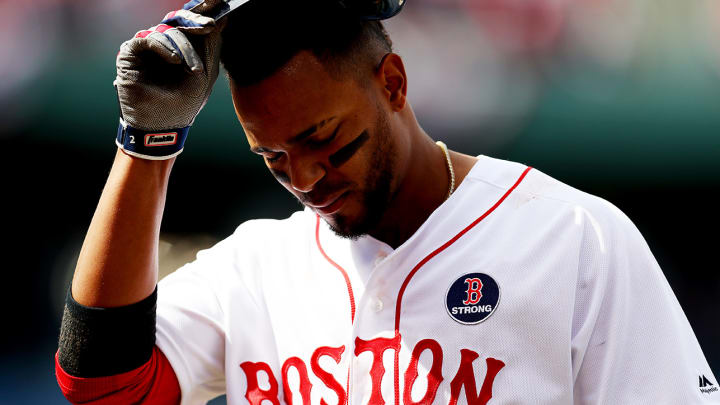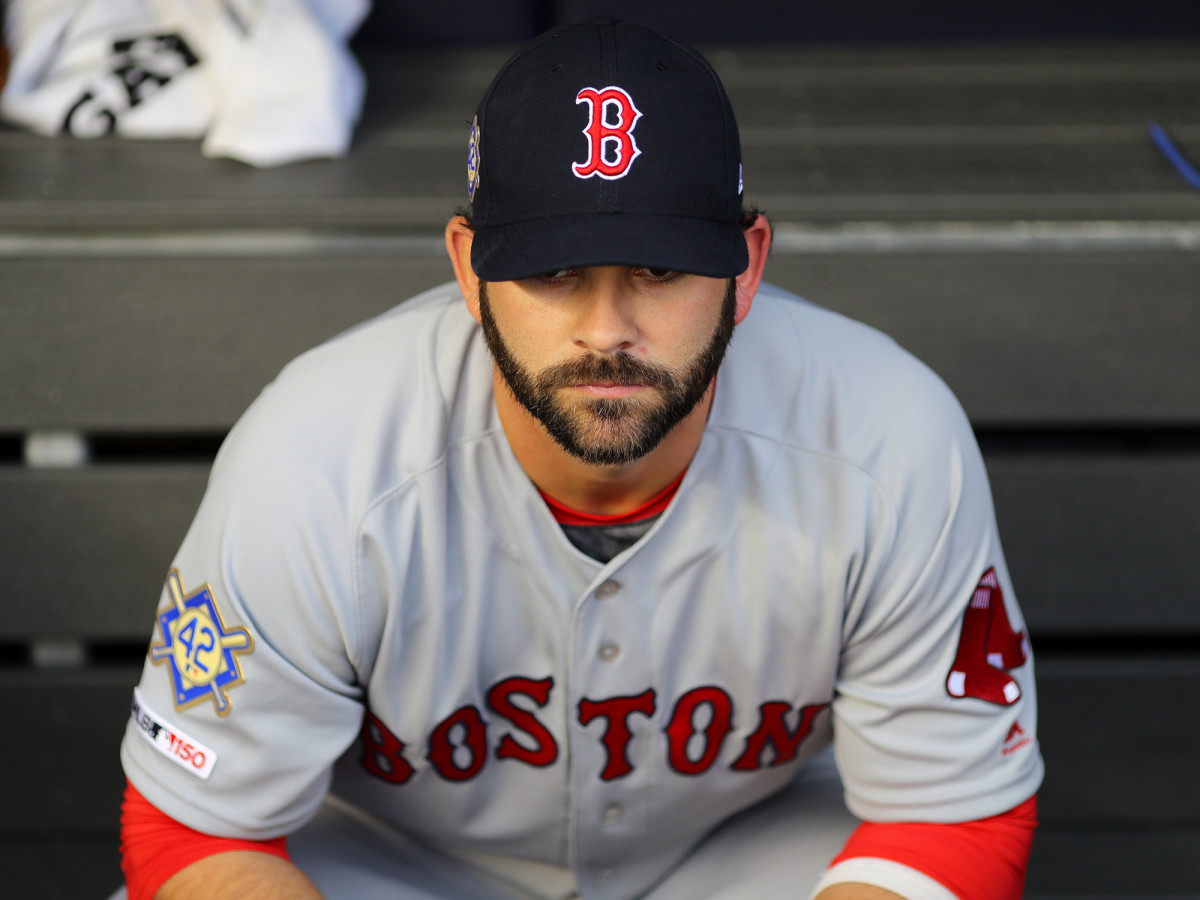The Red Sox Are in Desperate Need of Answers

NEW YORK — Perhaps the most surprising thing about the 90-minute staff meeting Red Sox president Dave Dombrowski called on Monday is that it lasted more than 90 seconds. How much, really, is there to discuss about a team that won 108 games and the World Series, then opened the following season an American League–worst 6–13?
Hitting coach Tim Hyers sums it up well: “We need to pitch better, we need to hit better, we need to play better defense. We need to pay attention to more details. We need to compete better.”
Still, when the team flight to New York was delayed due to weather, Dombrowski decided to take the pulse of his coaches. Most of them were already in the room near the clubhouse that doubles as a lounge and a conference room—long table, chairs, horseshoe of computers—when he gathered the stragglers and shut the door.
Let’s talk, he suggested.
Nearly every player on the roster came up as the dozen or so men discussed what ailed the team and how they might fix it. They ran through injuries: First baseman Steve Pearce is a week removed from a strained left calf. Utility man Brock Holt is on the injured list with a scratched right cornea. Second baseman Dustin Pedroia’s return from left-knee surgery has been marred by setbacks. Leftfielder Andrew Benintendi fouled a ball off his right foot last weekend and has not played since. Centerfielder Jackie Bradley Jr. missed two games earlier in the week with flu-like symptoms. The locker room has begun to resemble an emergency room; manager Alex Cora was forced to patchwork a lineup together on Monday that included catcher Christian Vázquez at second base.
But the problem so far has resided with the players who do make it onto the field. Boston has received positive value from five positions: the bullpen (0.7 WAR), the shortstops (0.9), the third basemen (0.2), the leftfielders (0.3) and the rightfielders (0.3). The starting pitchers (–1.3) and second basemen (–0.6) have been worst in baseball. According to FanGraphs, the Red Sox opened the season with a 32.2% chance to win the division and a 90.3% chance to make the playoffs; barely a 10th of the way into the season, those numbers plummeted down to 13.6% and 51.4%, respectively.

Players declared themselves the greatest team in franchise history as they celebrated on the field at Dodger Stadium last October. Not quite six months later, they sit significantly closer to claiming the first pick in the 2019 draft than first place in AL East. The collapse is virtually unprecedented. Boston’s -42 run differential is the worst by defending champs through 19 games in baseball history.
The last time the Red Sox inhabited the visitors’ clubhouse at Yankee Stadium, they were blasting “New York, New York” and spraying Korbel in each other’s hair. This week, when reporters gather around their lockers, the players mostly apologize.
“What I’m doing is unacceptable,” said rightfielder Mookie Betts. Last year’s AL MVP is hitting .212 and has contributed, with Bradley, to miscommunications on two flyballs.
“I just flat-out stink right now,” said ace Chris Sale. He was the second-most valuable pitcher in the league last year (6.8 WAR) despite missing a month with left-shoulder inflammation; the four runs he allowed in five innings on Tuesday lowered his ERA to 8.50. That figure is not even the worst one in Boston’s rotation: Rick Porcello sits at 11.12. No starter aside from David Price (3.79) sports an ERA below 6.00.
Assistant pitching coach Brian Bannister speaks confidently of regression. Things will turn around. This team is talented, he says. It’s just playing badly.
What do you do when your whole team is playing badly at the same time? You can’t fire all the hitters and you can’t fire all the pitchers. So Dombrowski considered the suggestions his employees offered and decided to fire one of the catchers, Blake Swihart, who has the highest offensive ceiling of the backstops but had drawn criticism for his game-calling. He called up Sandy León, a light-hitting veteran who is revered among pitchers. The move did not signal panic, Dombrowski insists. But would he have made it if Boston had opened the season 13–6?
“I don’t think so,” he acknowledges.
During that meeting at Fenway, special assistant Tony LaRussa discussed the 1983 White Sox, which he managed. That team started the season 16–24 and ended it 99–63. Bench coach Ron Roenicke offered the story of the 2002 Angels, which he coached. That team started 6–14 and won the World Series. He mentioned a two-day stretch in which 5’6” shortstop David Eckstein hit two grand slams.
“You just try to figure out what are the moments,” Roenicke says now. “Why do things turn around?”
That is one SLAMMIN' way for Brett Gardner to plant his 100th career homer, and it's now 5-3 Yankees!#YANKSonYES live stream: https://t.co/I5D6hC7r73 pic.twitter.com/Fq5KYfs3UY
— YES Network (@YESNetwork) April 18, 2019
The Red Sox might have hoped that meeting could be a moment. It was serendipitous; they wouldn’t have had it at all had the plane taken off as expected. Maybe that meant something. The next day, they informed León that his services were needed. So he loaded himself into a $200 Uber from Pawtucket, R.I., and arrived at Yankee Stadium in time to suit up. His first game back was Sale’s latest clunker. The next day, Vázquez started and hit a home run, but the Yankees—who had themselves been struggling until they met the Red Sox—mounted a comeback, on the strength of their own grand slam, off the bat of Brett Gardner.
The Red Sox trudged to their flight. This one left on time. They are still awaiting their moment.
